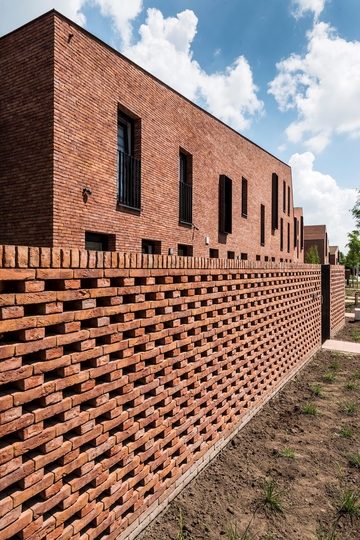Bricklaying patterns
It’s not just the facing brick that determines the look of a façade. The bricklaying pattern is just as important. What are the options, and which patterns would best suit your project?
The role of laying patterns
When the facing brick had a structural role as well, external walls were primarily laid as full bricks . We tend to refer to this as a single wall. The complete external wall consisted of facing bricks and was 210 mm thick. Over time, brickwork has lost is structural role. Today, it has an aesthetic role, which means that there are many more brickwork patterns available.
A well-considered pattern or combination or patterns adds extra effect and character to a project. Not every installation is suitable for every pattern. Joint-free designs typically work with random patterns. Let’s look at the different patterns that you can choose from.
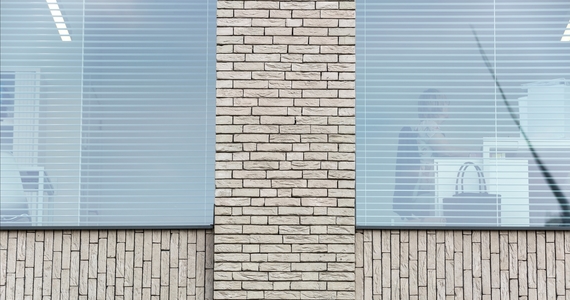
Stretcher bond
The stretcher bond is the most well known and used when laying facing bricks with a joint. Full bricks are typically used with this bond, and the full stretches of the bricks. They are stacked so that the vertical joints are staggered with half of the length of the brick. The headers of the bricks tend to be visible only at the corners of the building and at interfaces to windows and doors. This way of working results in scarcely any material loss as only a limited number of bricks need to be custom made.
Stretcher bonds are primarily used in pointed brickwork. If you are working without a joint, each brick needs to be trimmed to allow of the joints.
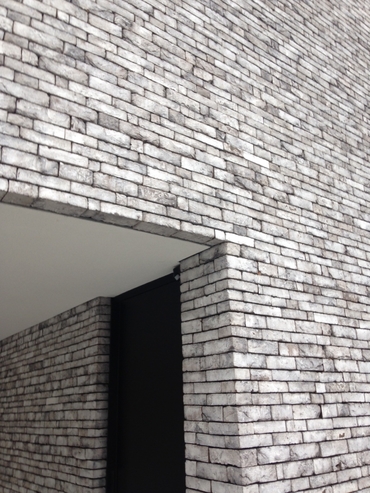
Random bond
In a random bond you use different lengths of brick, with the exception of dimensions smaller than 1/4 of a brick. When laying a random bond, there are a number of guidelines that need to be considered:
- Each even or uneven row must start with a three-quarter brick . Each other row can start with a header or stretcher.
- Only headers and stretchers are used in the wall, in any pattern.
- A maximum of four or five stretchers should be placed next to one another.
- A maximum of two headers should be placed next to one another.
- A maximum of five to six steps are possible.
This laying pattern is recommended when mortaring or bonding facing bricks characterised by low dimensional stability. With reused bricks, there is sometimes no choice.
In addition, this type brickwork is primarily used with joint-free designs, as not all bricks need to be trimmed.
Stacked bond or tiled bond
With stacked or tiled bonds, you are highlighting the vertical aspect of the brickwork. The facing bricks are stacked one on top of the other so that not only the horizontal ribbon joints but also the vertical butt joints continue.
This can be done with both stretchers and end headers. The latter will increase the cost price due to excess grinding and sawing.
An important point for attention with a stacked bond is the loss of structural strength in the wall. This can be resolved by adding in horizontal brickwork reinforcements; advice on this can best be sought from an engineer.
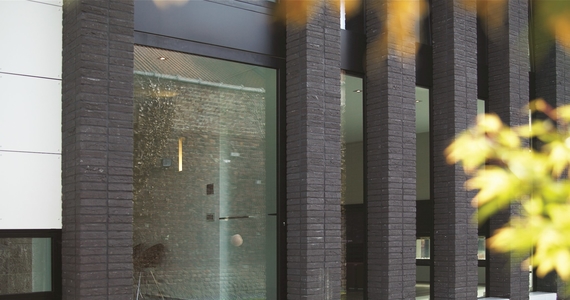
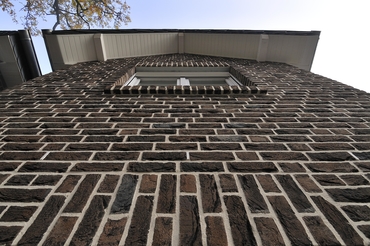
Running bond
The running bond is a variant of the stretcher bond. The vertical joints are staggered in each case by 1/4 or 3/4 of the length of the brick. Aesthetically, this gives the pattern a ‘falling’ movement.
If the layers are staggered in one direction, it is referred to as a ‘racking back’.
This can work with either left or right movement. To break up the long bonds of sloping bricks, you should switch direction at a certain height, thereby creating a zigzag effect.
By placing a three-quarter brick at the start of a row, the direction of the ‘course’ changes, falling left or falling right. If the run is installed over two layers, the effect is more of a ‘heading course’.
Heading course
A heading course has a pattern of headers and stretchers. A layer starts alternately with a three-quarter brick and a header. The layer with the three-quarter brick is then continued with stretchers only. The layer with the header is continued only with headers.
As a result, the bricks are primarily used as whole or half bricks, reducing loss and waste.
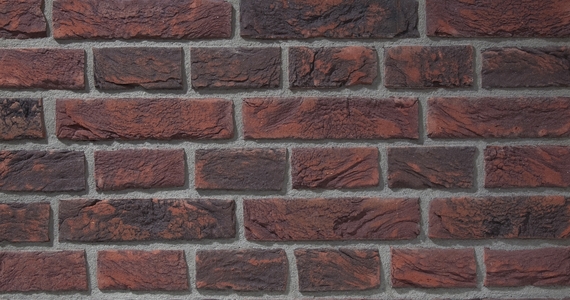
Block bond
A block bond is a bond where a block is created and then repeated in a certain rhythm. A common pattern is a block of four bricks stacked that is rotated by 90 degrees and then repeated in a stack bond. An alternative is a stack bond of two bricks, where the following two layers are staggered with a half brick length. This can be referred to as a double stretcher bond.
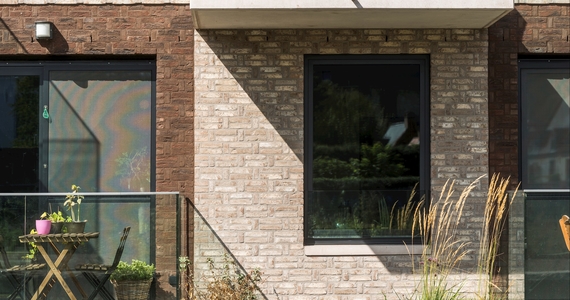
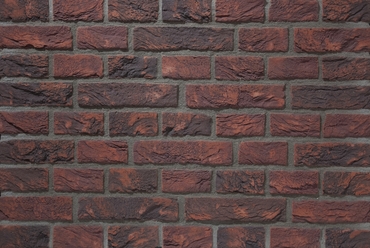
English cross bond
As the name suggests, this pattern has visible crosses. They are formed by a continuous alternation between a layer of headers and a layer of stretchers, much like the header bond.
There are two variants:
- ‘Public works’ cross bond A 3/4 brick is placed at the end of a layer of stretchers. Every four layers, a header is placed next to the 3/4 brick. This creates a staggering of a half brick length.
- ‘Private works’ cross bond The 3/4 brick is NOT placed in the stretcher layer but in the header layer. In addition, not quite at the end, but next to the header that forms the end. Every four layers, a header is placed in the stretcher layer to create a staggering of a half brick length.
Chain bond
All layers of the chain bond comprise a header and two stretchers successively. As a result, the headers come to lie precisely below the other layer, forming a ‘chain’. In contrast to the heading course or cross bond, the number of headers is more limited.

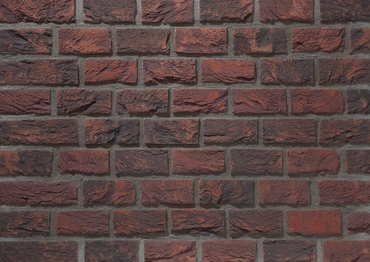
Header bond
A header bond can be considered a stretcher bond but with headers instead of stretchers. All layers comprise merely headers laid as stretchers. To ensure the stretcher appearance of the header bond, it’s important to start each layer alternating between a header and a three-quarter brick.
The header bond is combined with a standard stretcher bond to more easily create a curve in the wall.
Tip: special moulded bricks can also be ordered for applications of this nature so that you can continue the stretcher bond with stretchers. The cost will be higher. You can then change the direction on each layer.
Flemish bond
This bond is a little like the cross bond, except all layers alternate between a header and a stretcher. With a cross bond, these alternate between layers, not in the same layer.
French bond
The French bond is a variation on the Flemish bond. There are clear similarities between the two, but they are not entirely identical. With a French bond, each layer is alternatively structured as a stretcher and two headers.
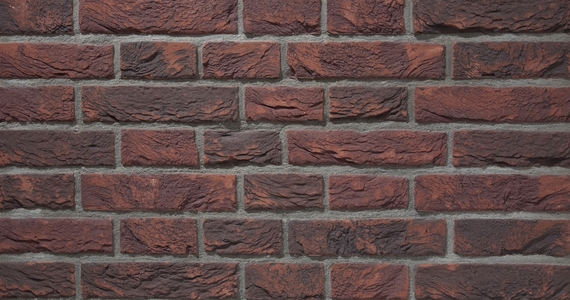
Butt joint-free
To emphasise the horizontal lines in the façade, you can work without butt joints. By laying the facing bricks against one another, without mortar, the end joints are eliminated leaving only the edge joint. This helps to highlight the horizontal lines in the brickwork and is an elegant way of visually extending the building.
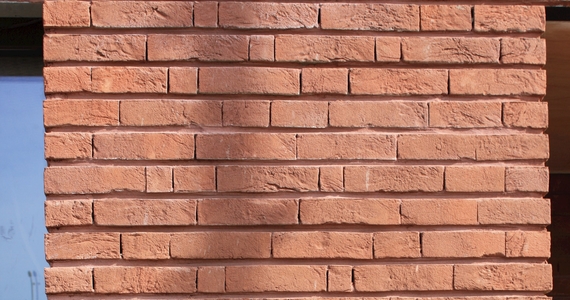
Claustra or Brazilian bond
There are some patterns that act as local decoration. As such, they are not used throughout the entirety of the project, but create special effects in a specific part of the façade of the building. They offer a wide range of creative possibilities. The facing bricks are positioned on top of one another to create empty spaces in between. This results in a ‘see-through’ effect. An unexpected yet elegant solution to make a structure behind the bricks visible or allow more light to enter.
